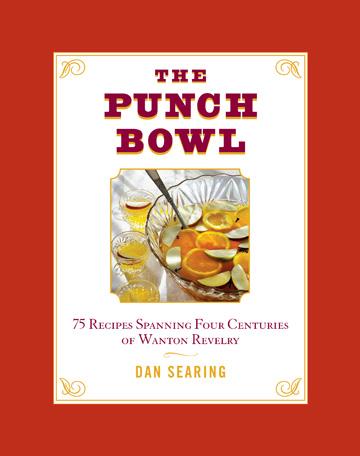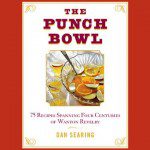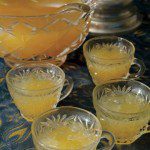When was the last time you had punch at a party? Was it an enjoyable experience? Dan Searing posed these two questions during a recent event sponsored by the Museum of the American Cocktail at the Passenger bar in October. Searing, a partner in the intimate Room 11 lounge in Columbia Heights, hosted the event, which featured delectable drink samples from his new book, “The Punch Bowl – 75 Recipes Spanning Four Centuries of Wanton Revelry.”
Many attendees, recalling a less than-spectacular cup of punch, snickered at Searing’s opening queries. But by the end of the evening, there was little doubt that everyone appreciated his carefully crafted concoctions.
While the history of punch dates back centuries, it’s recent incantations have caused many to associate it with a strong mixture of cheap booze served at college parties or a sugary-sweet refreshment they sipped on at their class reunions or a baby shower. Searing decidedly altered those memories with his sophisticated and freshly-made libations.
Punch dates back hundreds of years when it was made by the English in India. The name punch most likely came for the Hindustani word “panch,” meaning five. Ancient punches were forged from five ingredients: traditionally tea, lemon, sugar, water and arrack, an Asian spirit distilled from palm sap.
According to Searing’s book, sailors plying the waters of the Atlantic became particularly fond of punch and it found its way from India to pubs in England and North America, and eventually into people’s homes. During the era of triangular trade, rum became commonly used in punches.
As the trend grew, elaborate punch bowls became fashionable and the design and material of the bowl became status symbols for their owners.
Right now, cocktails are undergoing a fantastic renaissance, and punch is following closely behind. Searing proved that a glass of punch could be as distinctive and tasteful as a finely forged cocktail. While many punches in Searing’s collection are historical in nature, the book also features 25 contemporary creations from some of today’s top mixologists.
One of the of the classic recipes included is Fish House Punch, which Searing describes as “A concoction shrouded in secrecy (and ongoing disagreement about its exact ingredients). “According to Searing, “this grand recipe comes from the Schuylkill Fishing Company, one of America’s oldest men’s clubs, originally founded in 1732. Prominent figures in American history, including George Washington, have enjoyed a glass or two of Fish House Punch at the famous club (which still exists today, though no longer in Schuylkill county.”
Fish House Punch has a strong citrus tang up front followed by rich and layered flavor stemming from two types of rum. While its bright sunny taste would be refreshing on a warm day, the full-bodied and savory attributes from the cognac and brown sugar would make this an enjoyable tipple on a cool autumn evening.
Ingredients to make Fish House punch may be purchased at Dixie Liquor at 3429 M St. in Georgetown. Searing’s book ““The Punch Bowl – 75 Recipes Spanning Four Centuries of Wanton Revelry,” is available online and at Room 11.
Fish House Punch – Circa 1732
15 to 20 servings
4 cups freshly squeezed lime juice (about 32 limes)
2 cups freshly squeezed lemon juice (about 12 lemons)
1 cup dark brown sugar
1 cup Appleton’s Estate Reserve dark rum
2 cups Flor de Cana Extra Dry 4 Year Old white rum
1 cup Pierre Ferrand Cognac
1 block of ice
Pour the lemon and lime juices into a large punch bowl. Add the brown sugar, and gently stir until dissolved. Slowly add the dark and light rums and the brandy, stirring constantly. Slowly ease the block of ice into the punch bowl. Put the punch bowl into the refrigerator, and chill for 3 hours. Stir the punch every few hours to help the flavors blend. When ready to serve, remove the bowl from the refrigerator and, if need be, add more ice.
- Photo by Zachariah Weaver




